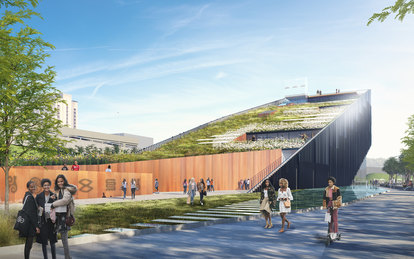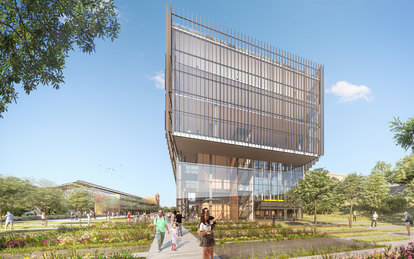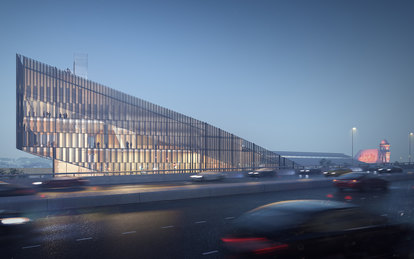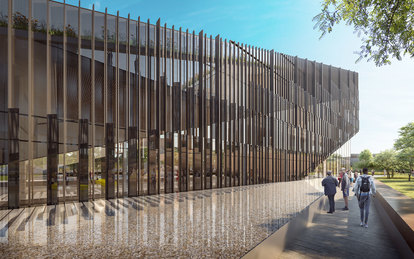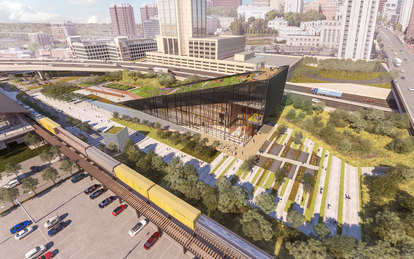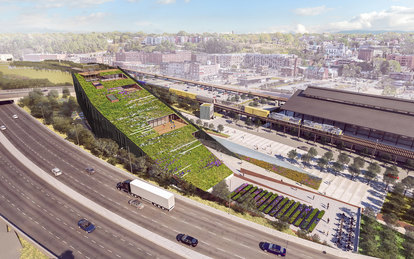Richmond National Slavery Museum at the Lumpkin's Slave Jail Site
Interpreting the complex and painful history of enslavement in America goes far beyond designing a physical structure. It first involves designing a process to ensure that an entire community of voices are heard, and the messages shared are thoughtful, truthful, and lead to greater understanding.
Client
City of Richmond
Location
Richmond, Virginia
Markets/Services
Architecture, Cultural, Fire Protection and Life Safety Engineering, Historic Sites & Monuments, Interiors, Lighting Design, MEP Engineering, Museums, Programming
Featured Awards
Award of Honor for Architecture, AIA Virginia, 2020
In the early 2000’s, archaeologists unearthed remnants of a slave auction complex that operated in downtown Richmond for decades in the mid-1800s. Known as “Devil’s Half Acre,” the site included several structures ranging from a large holding area and what was referred to as a “slave jail” on the lower portion of the site that was subject to periodic flooding, a hotel, tavern, and the residence of Robert Lumpkin, an especially cruel and violent slave trader. Despite its horrific impact on the lives of thousands of enslaved Africans and African Americans, the site was all but forgotten over time—an ugly truth buried by train tracks, a parking lot, an interstate, and other modern infrastructure. Community leaders and the City of Richmond desired to develop a memorial that would reveal its haunting history and interpret its cultural significance.
Recognizing that this historic undertaking went beyond the traditional scope of an architecture and engineering project, SmithGroup collaborated with a specialized team with expertise in African American history, art, archaeology, historic preservation, museum organization and more. The first phase was to define the scope of the project and craft a concept of how the story would be told.

With substantial public engagement, the project purpose began to take shape: a visitor experience that would not only reveal the archaeology and Richmond’s history as a hub for transfer, sale and exchange of enslaved Africans and African Americans in the nation, but also explore how the legacy of slavery endures today. The themes that emerged and drove the design are that of resistance, resilience, light and Afrofuturism.
The site lies between a busy rail line and interstate I-95 and is along the interpretive Richmond Slave Trail. The concept design of the museum building is a metaphor representing the idea of the earth being pulled or pushed up to expose the hidden history beneath the site. The raised earth is tilted to create an iconic gesture of upliftment and hope. At its peak, an outdoor terrace creates a lookout point to the adjacent African Burial Ground, the James River, the Virginia State Capitol, and to the network of other slave-trade sites throughout Richmond’s Shockoe Bottom district.
The memorial-museum is surrounded by discreet landscaped moments that reach out to the surrounding neighborhood including water gardens referencing the historic Shockoe Creek. The plan envisions a narrow entry into the museum that signifies oppression and funnels the visitor inside. A bridge over a shallow pool is a metaphoric connection to the Middle Passage.
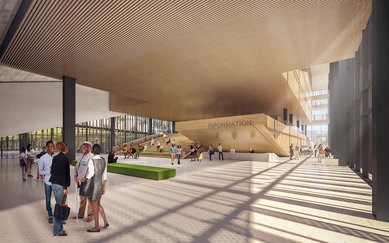
Interior spaces and exhibits pivot around a central core that descends to the actual archaeological remains of the sacred site, and then ascends upward with exterior views that symbolize resilience and rising amid unthinkable constraints.
On the highest levels a genealogy and research center will provide a place to make discoveries about one’s ancestors, and to connect visitors to other significant research entities, museums, and institutions throughout the US.
As envisioned by the people of Richmond, the museum and its unearthed archaeological remnants will serve to unearth the truth and legacy of enslavement and the systematic state sponsored violence against Black people that has yet to be fully acknowledged in America.
